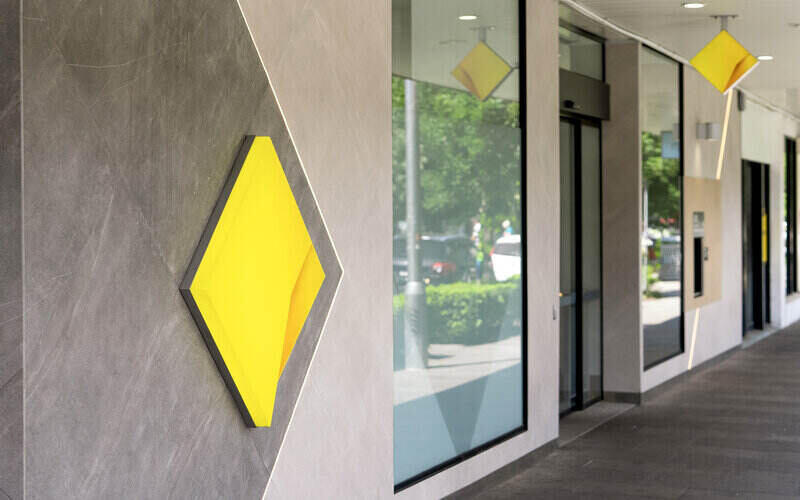The nation’s biggest bank today warned that this year could bring more arrears and impairments.
“As cash rate increases have a lagged impact on households and business customers, we expect financial strain to continue in 2024,” CommBank CEO Matt Comyn said.
The bank revealed its earnings for the first half of fiscal year 2024 today, posting a $5 billion half-year cash profit – a 3% fall on that of the same period of last year.
It also revealed that those aged between 20 and 24 appear to be suffering the most in the current climate.
Despite inflation pushing prices higher, their essential spending has remained flat year-on-year, while they’re spending less on discretionary purchases.
The cash rate is often called a ‘blunt tool’.
It works to reduce inflation by increasing the cost of borrowing, thereby reducing spending among borrowers and lessening demand for goods and services.
It also increases the returns depositors can realise through the likes of savings accounts and term deposits.
Over the 12 months to 31 December, the average CommBank home loan saw its rate climb 1.55% p.a. while its typical deposit product’s rate was hiked by 1.76% p.a.
The biggest of the big four banks holds nearly 25% of the nation’s home loan market and close to 27% of its deposit market.
Looking forward, Mr Comyn stated the bank remains “optimistic about the outlook for the Australian economy”.
“The economy has been fairly resilient, supported by a strong labour market, savings and repayment buffers, population growth, and relatively high commodity prices,” he said.
“However, downside risks are building as slowing demand and persistent inflation impact Australian businesses.
“Ongoing geopolitical tensions also create uncertainty.”
More savers turn to term deposits
After a drop in popularity during the pandemic years, consumers are once again returning to term deposits.
CommBank now commands $107 billion worth of term deposits, up from a low of $82 billion in 2021-22.
Meanwhile, more cash is being kept in savings accounts.
The amount being held in CommBank at call interest bearing products (those that can be withdrawn from at will) is now approaching $200 million.
At the same time, Australians appear to be bolstering their offset accounts, with the overall value of money kept in them soaring 50% since late-2019 to $75 billion at the end of 2023.
That’s likely a reflection of the rising cash rate.
The Reserve Bank of Australia (RBA) began hiking the cash rate in mid-2022, lifting it from a record low 0.1% to sit at 4.35% as of November.
That means interest rates offered on savings accounts and term deposits have shot higher, as have those charged to home loan borrowers.
Term deposits now provide a quarter of the bank’s $430 billion retail deposit mix, with savings accounts making up another 47% and offsets commanding a 17% slice.
Though, with the likelihood of a cash rate cut occurring in the back-end of this year apparently increasing, many banks have begun to cut the rates offered on term deposit products.
Right now, the market leading rate on a 12-month term deposit is 5.20% p.a., compared to the 5.35% p.a. return promised by some market participants late last year.
$110b of home loans still to roll off fixed rates
Australia also appears to have surpassed the worst of the ‘fixed rate cliff’.
The majority of mortgage holders who fixed their interest rate prior to the RBA’s hiking spree have since rolled onto variable rates.
Around eight in 10 CommBank home loan customers have now officially made the leap.
Though, around $110 billion worth of home loans will still feel the lurch in the coming months, with $20 billion worth to roll from a sub-3% p.a. rate by the middle of this year.
As of the end of last year, more than four in five home loans funded through the bank were on variable rates – up from around three in five at the end of 2021.
The number of borrowers in negative equity – that is, their property’s value is less than the principal on their loan – has also risen in recent times.
Customers in negative equity climbed from 0.5% of CommBank’s loan book in late 2022 to 1.1% in late 2023.
That represents around 20,000 borrowers, the majority located in Victoria and NSW, and just 20% of which have lenders mortgage insurance (LMI).
Meanwhile, home loan arrears ticked up over the year just gone, but remain under historical averages.
The bank notes that, with the cash rate at 4.35%, the median monthly home loan repayment represents 22% of a median customers’ pre-tax income.
That would climb to 23% if the cash rate was to be hiked by 25 to 50 basis points.
Right now, it predicts 3.7% of borrowers are in negative cash flow, with the majority of those making use of established financial buffers, as the chart below shows.
Image courtesy of the Commonwealth Bank of Australia



 Denise Raward
Denise Raward
 Harry O'Sullivan
Harry O'Sullivan

 Jacob Cocciolone
Jacob Cocciolone
 Emma Duffy
Emma Duffy

